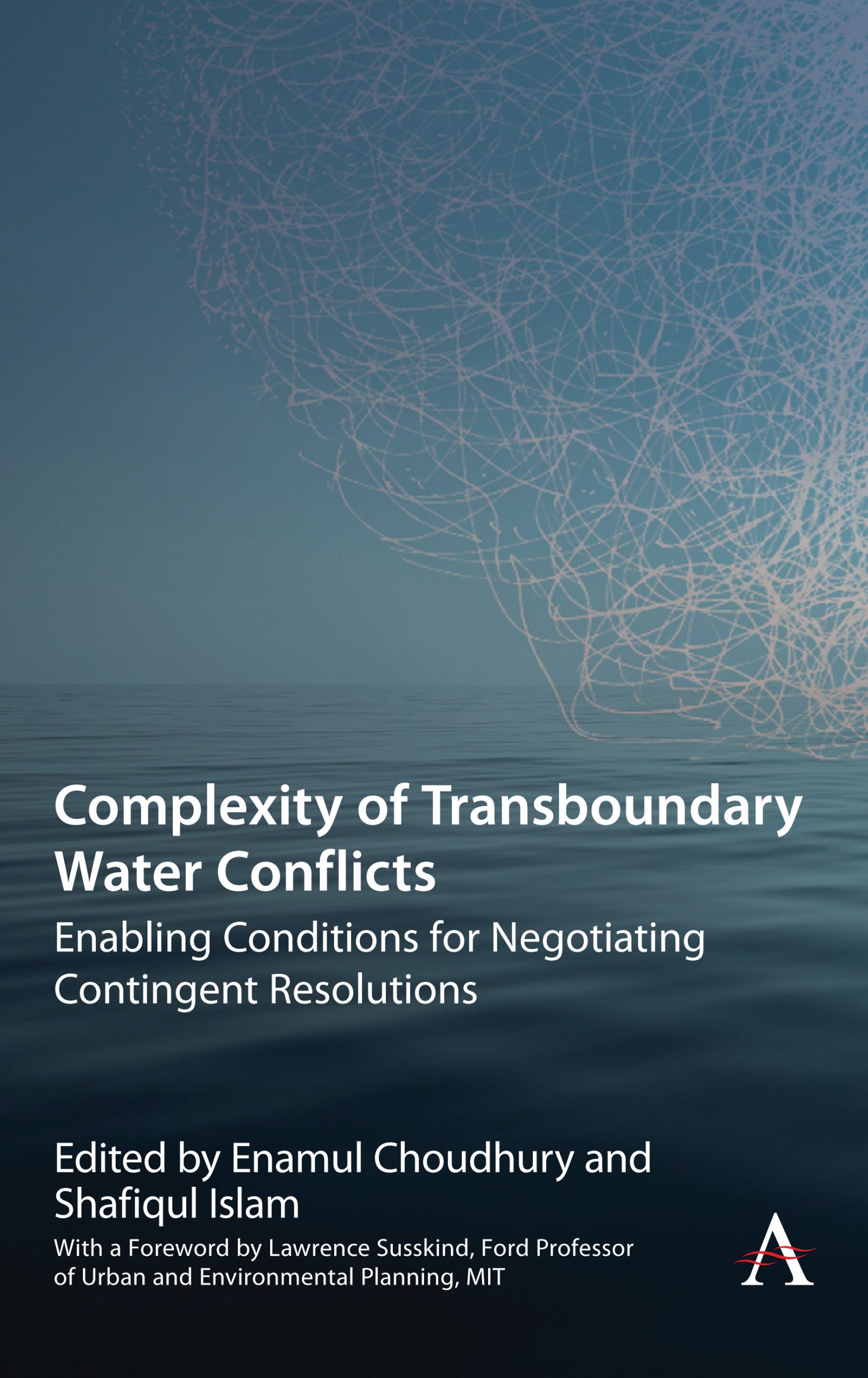Complexity of Transboundary Water Conflicts: Enabling Conditions for Negotiating Contingent Resolutions
Reviewed by Shekhar Chandra, Massachusetts Institute of Technology
How can our understanding of the complexity of water disputes enable us to sustainably manage our dwindling water resources? Why does a unified theory of water conflicts, although attractive among academics, remains elusive?
Complexity of Transboundary Water Conflicts: Enabling Conditions for Negotiating Contingent Resolutions, edited by Enamul Choudhury and Shafiqul Islam, Anthem Press, 2018, 292 pp.
Water is a critical input for economic development and the functioning of the natural environment. Due to the changing climate, increasing demand, unsustainable use of water resources, and political relationships between groups of people, states and countries are being adversely affected—and in some cases even driven—by disputes over shared water resources. Water-related conflicts are occurring at all geographical scales. There are local disputes among groups fighting for access in the face of increasing demand and supply gaps resulting from poor physical and institutional infrastructure, state-level conflicts within national jurisdiction laying competing claims over shared water resources, and international conflicts, often involving transboundary water disputes. Gleick (2009) shows that the number of violent conflicts over water resources increased from at least 19 in 1900 to at least 61 in 2007.
Enamul Choudhury and Shafiqul Islam provide an interesting perspective on transboundary water disputes. They argue that in transboundary disputes, causal relations are not clear. In such conflicts, uncertainty, non-linearity, and bidirectional feedbacks occur all the time that makes system dynamics highly complex and continuously evolving. The book is in three parts. The first part deals with the theoretical framework, especially the underlying elements of complexity theory. Using examples of the Indus and the Jordan, they identify three enabling conditions—interest identification, interdependence recognition, and conflict-resolution mechanisms. The second part underscores the complexity of some of the ongoing water conflicts around the world that includes the Danube, Brahmaputra, Ganges, Nile, and Colorado rivers. Finally, the third part is mostly a reflection on several cases in different river basins on the roles and interactions of complexity, enabling conditions, and contingency in varying contexts.
There are practical takeaways from this work. The authors make a case that while developing a general theory of water conflicts remains highly attractive among academics, regardless of the number of conflicts we study, a unified theory would be elusive. It is because each case is continuously evolving and has a set of unique characteristics—what they call “enabling conditions.” Such contextual uniqueness of conflicts makes the pursuit of one single theory of water conflicts extremely difficult. The authors make it amply clear that despite the importance of situational and contextual factors, conflicts are often (unfortunately) reduced to questions about respective shares of a fixed resource (water), which inevitably ends up as a multi-variate optimization problem.
Overall, the book is a wonderful addition to the foundational textbook, Water Diplomacy, on water dispute by Professors Islam and Susskind (2012). Their conceptualization that water is a flexible resource has radically changed the way academics and practitioners think of managing water resources. This book further advances our understanding of the complexity of water disputes to be able to sustainably manage our dwindling water resources.
References
Gleick PH. Water Conflict Chronology. The World’s Water, 2008–2009: The Biennial Report on Freshwater Resources. Washington, DC: Island Press; 2009:151–196.
Susskind, L. & Shafiqul Islam. (2012). Water Diplomacy: A Negotiated Approach to Managing Complex Water Networks. New York: RFF Press.





